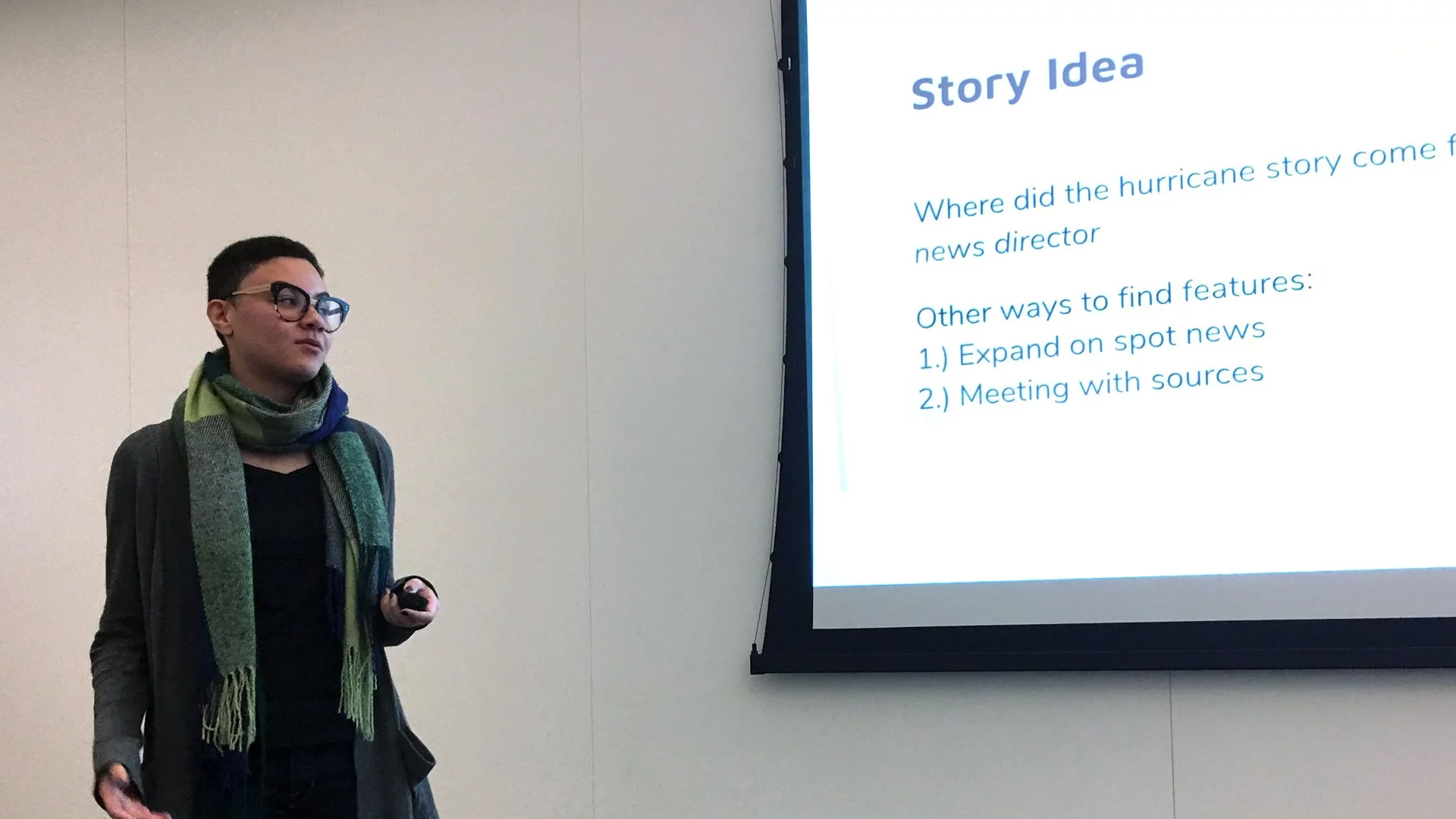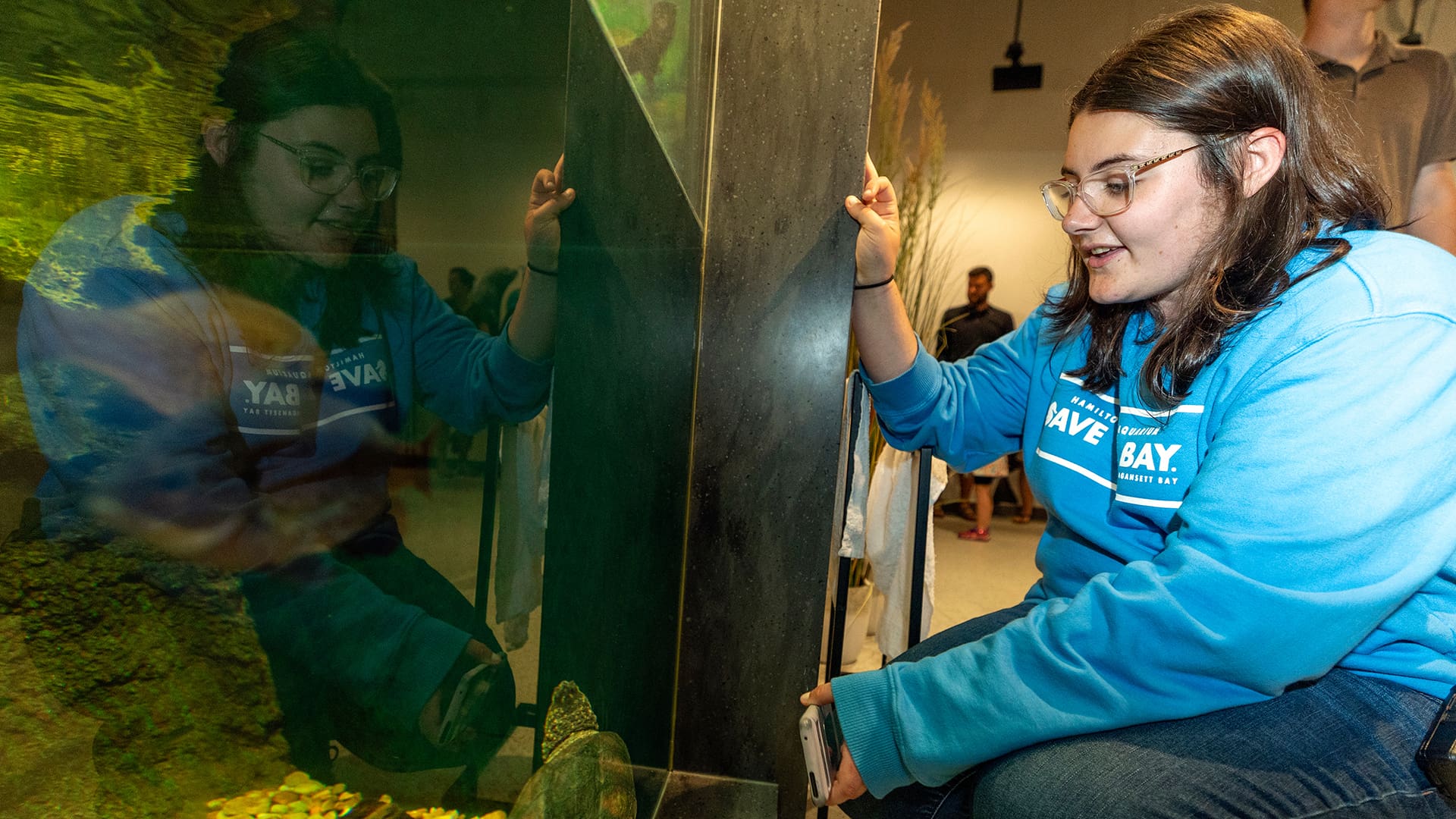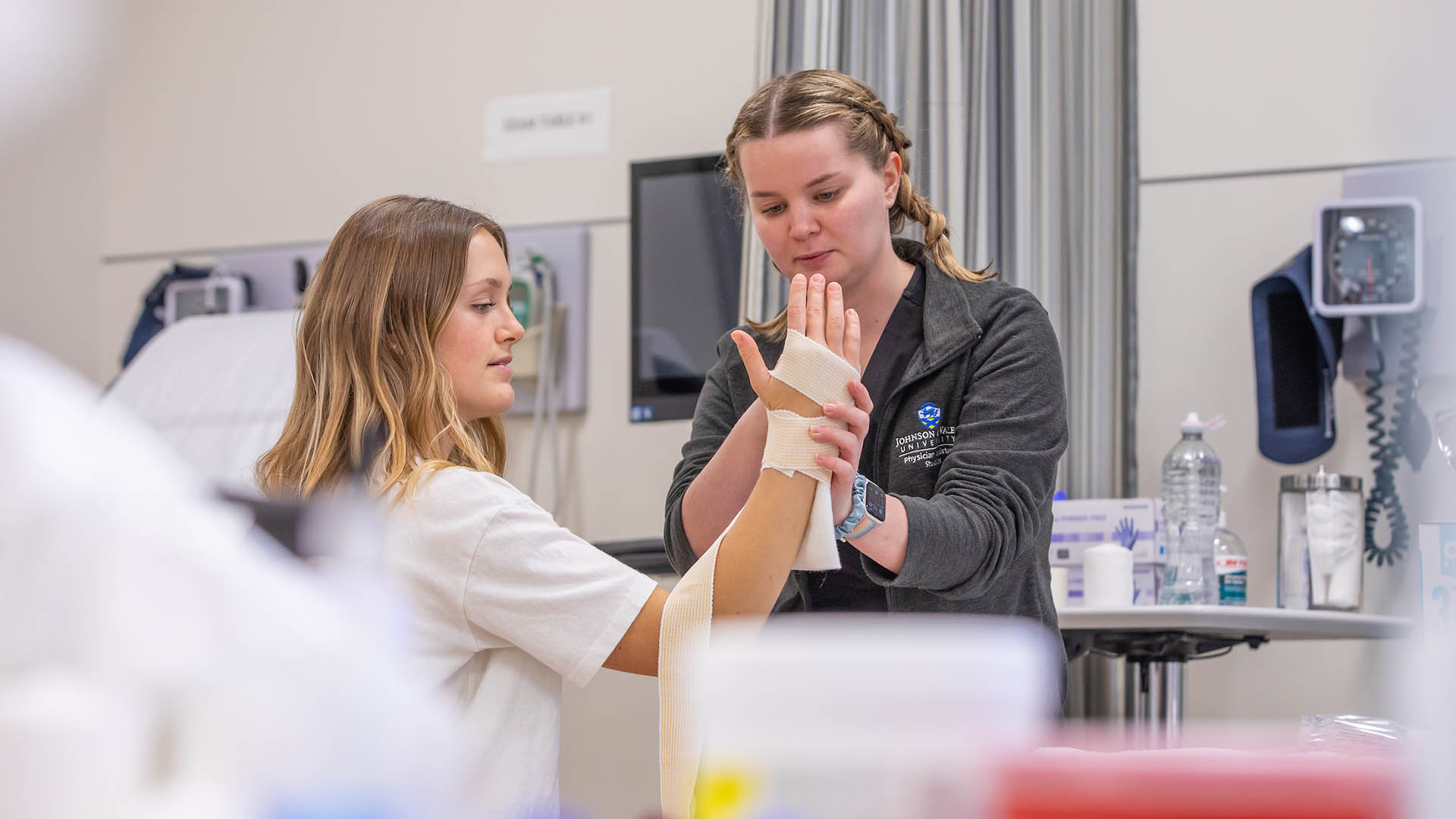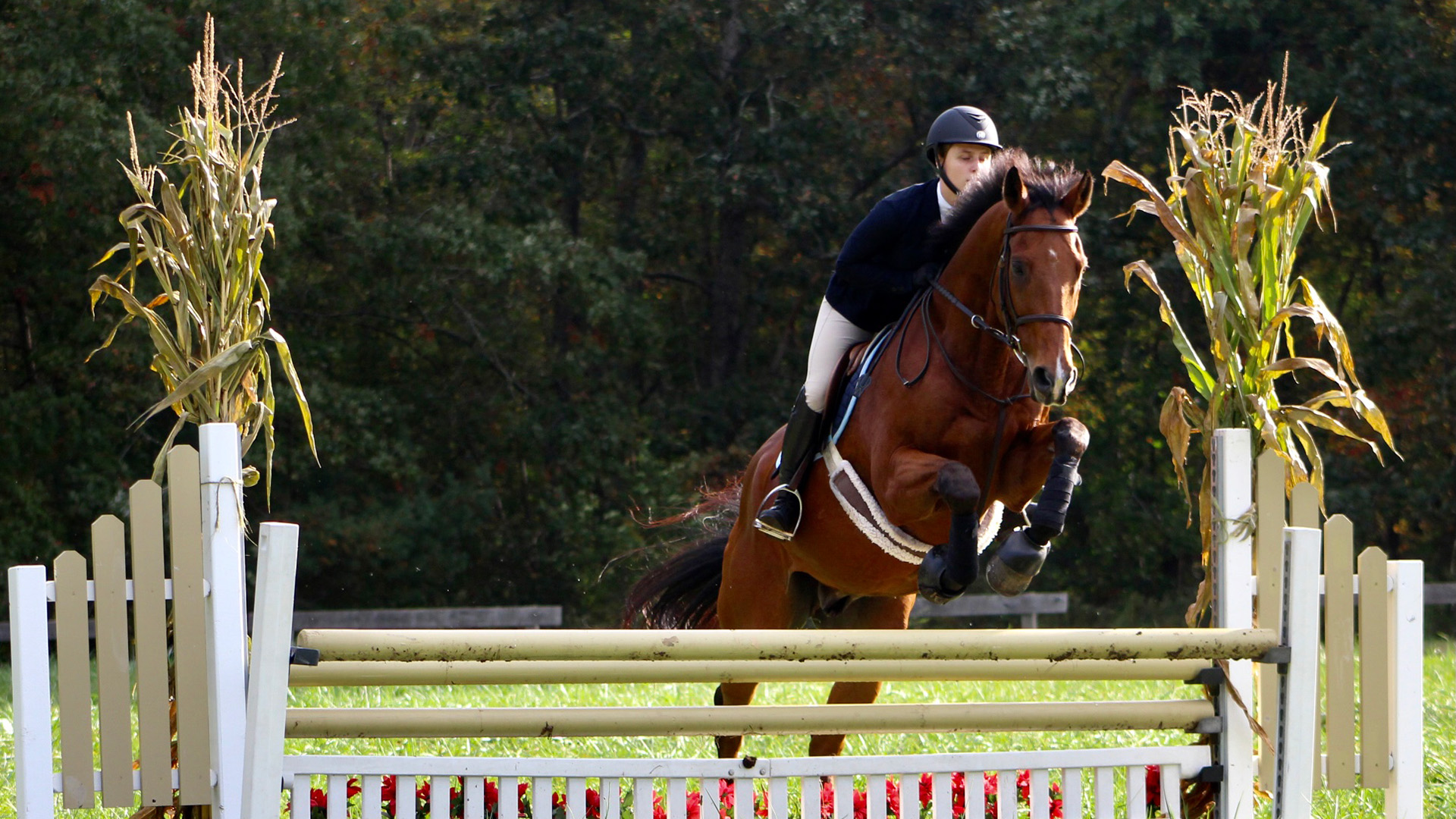The World as Your Lab: Science Writing with Avory Brookins
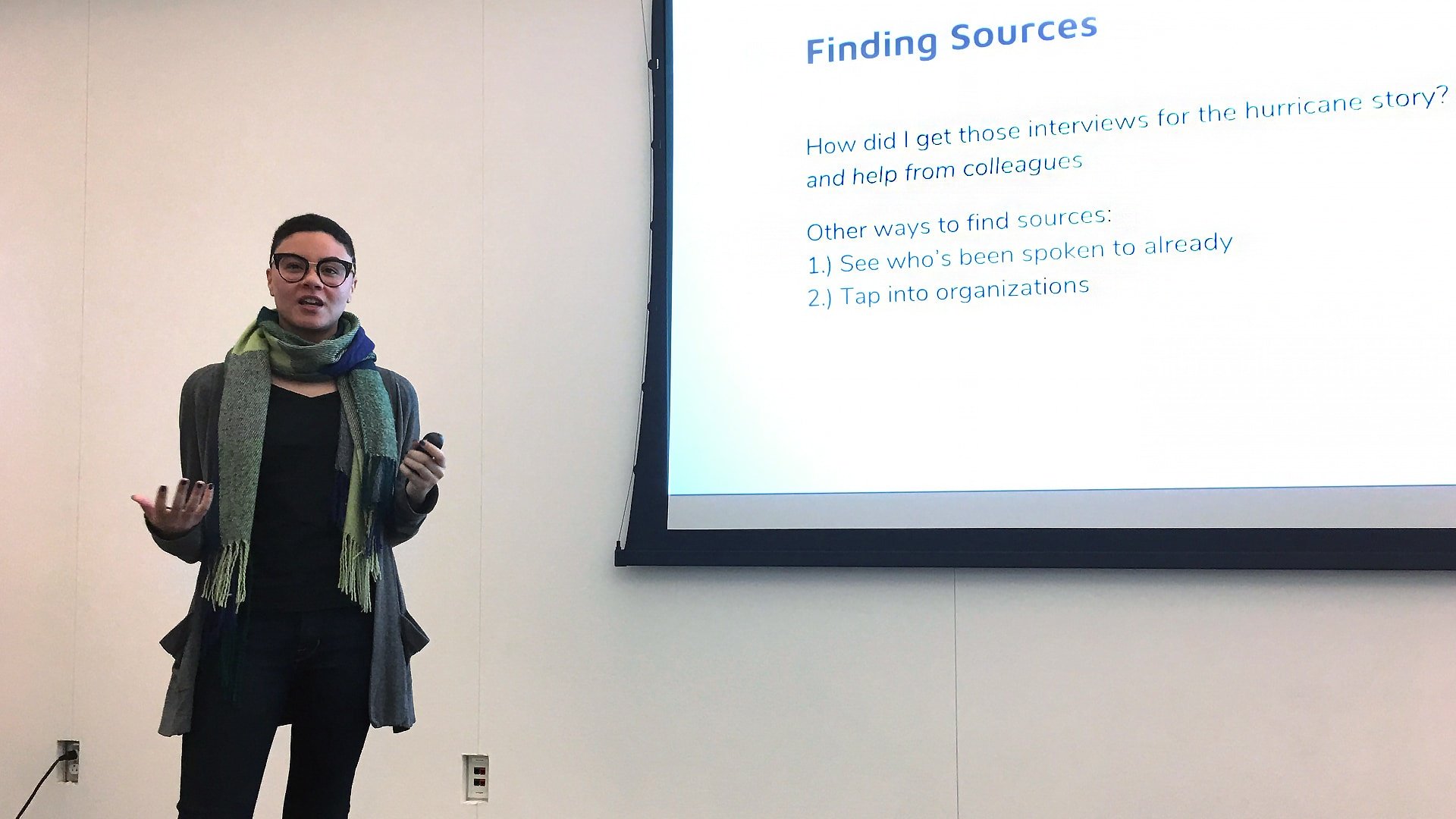
When you picture a career in science, you may think of people in lab coats hovering over Bunsen burners and microscopes. But science careers are so much more varied than that.
This was the message of Avory Brookins, an environmental reporter with The Public’s Radio (formerly Rhode Island Public Radio). She spoke recently to students majoring in Biology, Health Science, and Media & Communication Studies about “Life Outside the Lab: Where Science Meets Journalism.”
Brookins addressed the two types of science segments she writes: spot news, which lasts a total of 45 seconds, and feature stories, in which she can dive into greater depth. She peppered examples throughout her presentation.
For spot news, she showcased climate change’s impact upon the New Bedford scallop population .
“Ask yourself, ‘Why does this matter?’,” she advises. Scallops are a vital part of the New Bedford economy, accounting for 80-90 percent of all fish that comes through the city’s port. Any change in the scallop population can significantly impact hundreds of fishermen’s livelihoods.
"You have to find ways to connect the story with as large an audience as possible."
Her feature story example focused on the 80th anniversary of Rhode Island’s devastating Hurricane of 1938. She interviewed an oceanography expert, an eyewitness, and a man currently living in the area most affected by that hurricane the latter chosen as a way to link the piece to the present.
“You have to find ways to connect the story with as large an audience as possible,” she suggests. By relaying the history and science of hurricanes, Brookins’ feature story is helping people plan for future catastrophic storms.
Brookins’ news director gave her the idea to pursue the 80th anniversary angle, but she also gains inspiration from press releases, follow-ups on previous reports or different angles of a similar story. To expand on her reporting, she’ll perform online research and consult colleagues and outside sources. From there, she conducts interviews.
The Interview: Focus on The Why
The reporter’s first goal in an interview is to cover the basics: the who, what, where, when, how and why. The why is often the most important — and the most elusive.
“Listen!” she advises. “And ask things you can’t say yourself, such as their opinions and emotions.”
In science, you can’t assume anything, she reinforces. You need to get the details so the audience can develop the most well-rounded picture.
“You have to understand it to condense it and explain it in ways that everyone can understand. If my granny heard this, would she understand what I’m talking about?”
"Bring readers into a space that they never would have been a part of without hearing your piece."
Sometimes interview subjects can provide these “aha” moments. As Brookins was interviewing the oceanography expert for her hurricane story, he described the jet stream as a “river of wind,” and Brookins knew she had to incorporate that phrase into her piece.
The end result of incorporating these “aha” moments? The listener is one step closer to comprehending the world.
Write to Inform
Once interviews are complete, the writing process begins. Brookins recommends only writing what the audience needs to know, as people’s increasingly busy schedules leave them little time to sit and consume. Breaking down complex information as if you were talking to someone who never heard about this before is also key.
“This could be your friend, your mom, your dad, and you just want to tell them something cool,” she says. “Bring them into this space that they never would have been a part of without hearing your piece.”
To do this, she recommends writing in a conversational tone — but not too casual, striking a balance between precision and informality.
Brookins graduated with her bachelor’s degree in journalism from Temple University in 2016, and took a nine-month reporting fellowship at Wisconsin public radio. She worked full-time on general assignments, shadowing reporters and filling newscasts, until she was offered the environmental reporter position at Rhode Island public radio in April 2017.
She knew she wanted to be a writer at a young age. But it wasn’t until she discovered journalism in seventh grade, writing for her high school paper and acting as its editor-in-chief as a senior, that she knew her vocation was set.
“Journalism is a very human profession,” Brookins says. “You’re never going to be perfect. But people won’t get that information without you, and it’s really rewarding to think about that.”
Is Science Writing Right for You?
- You like to write.
- You prefer conversational writing to academic writing.
- You have more fun learning about science than doing it.
- You like the idea of breaking down complex information for people to understand.
- You’re creative.
- You’re a people person.
- You want to learn every day and on the job.
- You want to make a difference in the world.
